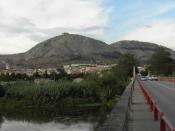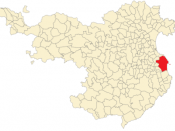Declaration
This report entitled 'The Geology of the Massif Montgris' was composed by me and is based in my own work. Where the work of others has been used, it is fully acknowledged in the text and in captions to tables and illustrations.
Chapter 1.0
Abstract
This is a study of the Massif Montgris, it is based on evidence gathered in the field over 21 days of field work. To supplement this data I have looked at papers and works by previous visitors to the Montgris. The units within the area are from the Upper Cretaceous the Tertiary and the Quaternary. I aim to give an overall guide to the geology on a smaller scale than has previously been accomplished. This study is mainly aimed at correctly dating the units of limestone using micropalaeontological data. The micropalaeontological data has also given light into the palaeoenvironment/geography during deposition.
Chapter 2
Introduction
2.0.1 Introduction
Between the 24th of June and the 24th of July 1995 Glen Burnham and I ventured to Catalunya. More precisely to Torroella de Montgris. Torroella is in the North East of Spain, just inland of the Mediterranean sea. This remarkable old town lies at the foot of the rather imposing Massif Montgris.
Locally known as 'El Montgris' (literally the grey Mountain) the massif rises up over the town and dominates the skyline. Torroella sits on quaternary conglomerate deposits. These are easily eroded, hence the valley between Pals (10Km to the south) and Torroella is extremely flat. The valley is bisected by the river El Ter, which flows at a leisurely pace from the foothills of the Pyrenees. The river flows to the south of Torroella and winds it's way to its conclusion in the Playa de Pals (6Km east of Torroella).
El Montgris has been known to humans...


